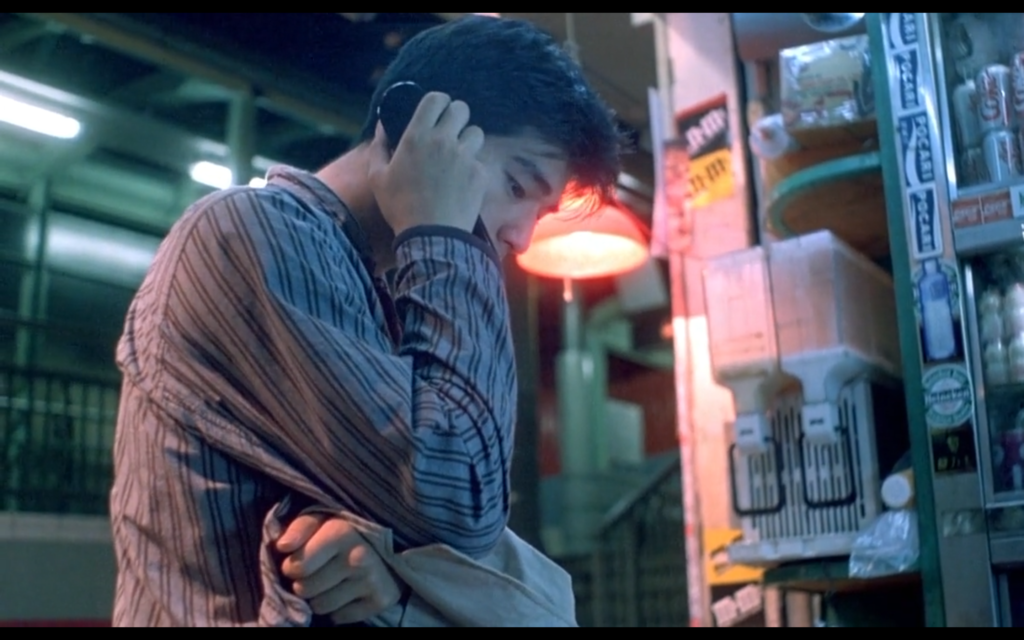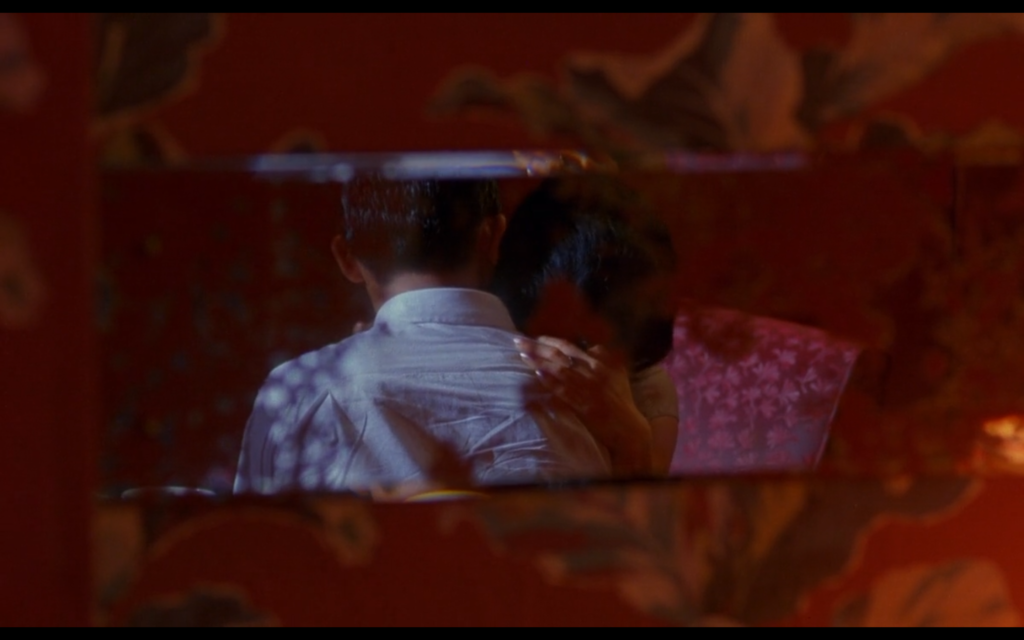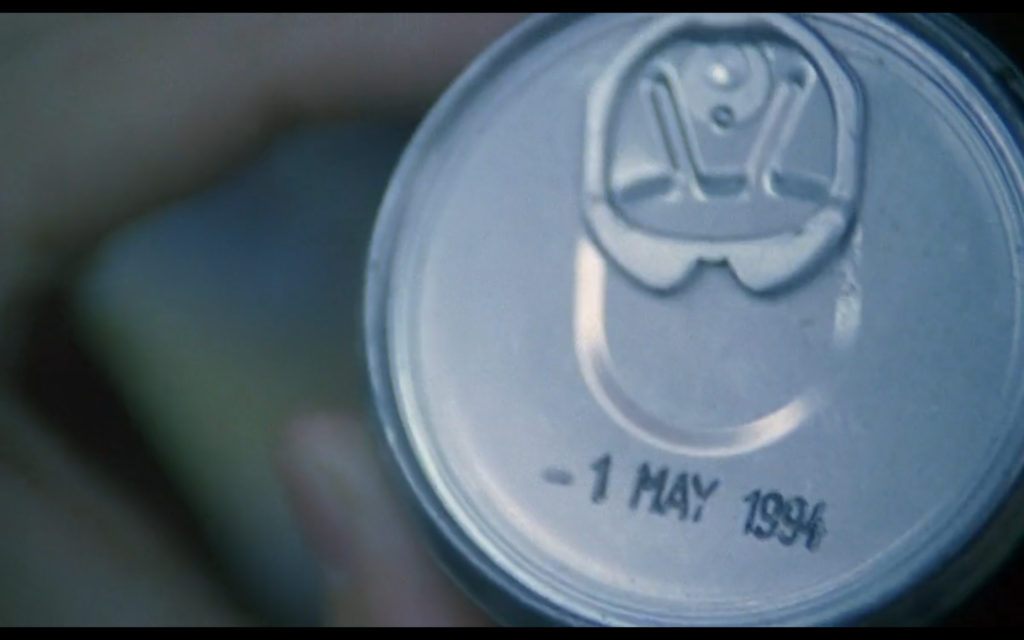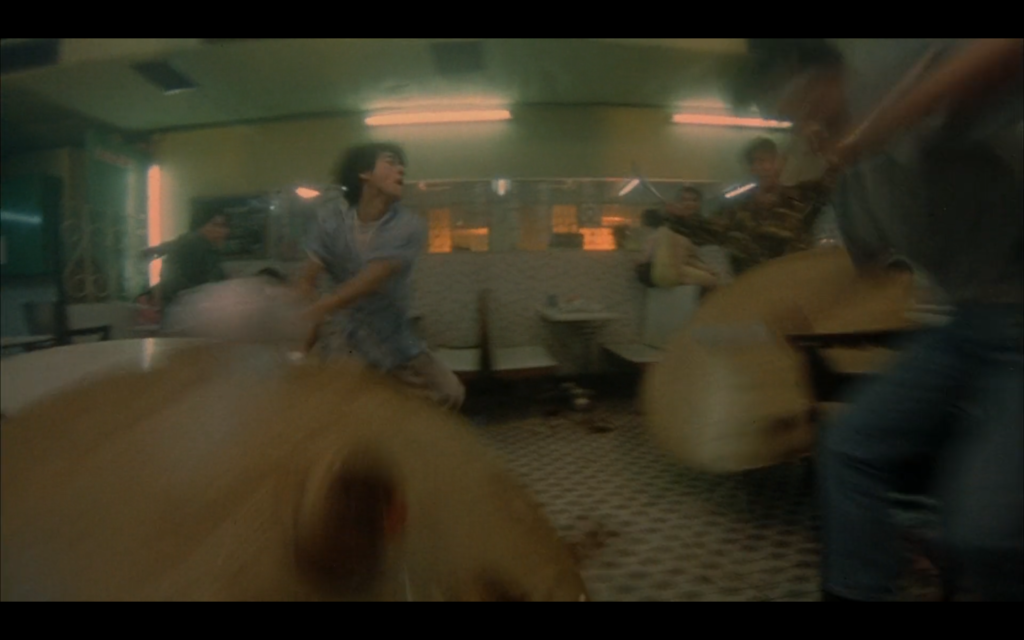Wong Kar Wai is one of the most influential auteurs of our time. To understand the individualistic style and the experimental aspects of his films, it is important to understand Hong Kong Cinema Second Wave.
HONG KONG CINEMA SECOND WAVE
The First Wave of the New Wave began in the 1970s, marking a transformative period in cinema. This era was heavily influenced by the popularity of martial arts films and focused on themes of crime, violence, and the loss of innocence. Martial arts cinema, with its stylized action and high-energy storytelling, dominated this period, shaping the cultural identity of the era.
The Second Wave emerged as a departure from the genre conventions of its predecessor. This period saw filmmakers experimenting more with character-driven narratives and incorporating a greater presence of romance and emotional depth. It represented a maturation of the industry and offered the new generation of filmmakers greater creative freedom.
Heavily influenced by Hollywood, the Second Wave was notable for its exploration of themes and genres beyond the confines of martial arts. Directors used this era as a platform to craft experimental and genre-diverse films, reflecting a shift towards a more globalized and multifaceted cinematic landscape.

The second wave consisted of directors and filmmakers who were educated abroad and therefore influenced by Western culture. Their movies were a synthesis of the Western world and the Eastern world, inspired by Japan, China, and the USA. John Woo, Ang Lee, Ann Hui, Edward Yang, and Wong Kar Wai are a few highly acclaimed directors from the second wave.
Films made during this period utilised new technology and techniques. Movies were not made for commercial purposes alone. It was a social medium mirroring social and political issues, such as the Vietnam War and the cultural revolution.
“This is what the difference is between Hong Kong and Chinese cinema. Chinese cinema was made for their communities, it was for propaganda. But Hong Kong made films to entertain and they know how to communicate with international audiences.”
Wong Kar Wai on the second wave.
Their films portrayed Hong Kong as a fast-paced, modern metropolis—a culturally inclusive hub where people from diverse backgrounds lived and worked together in harmony. Characters in these movies often spoke a mix of Mandarin, Cantonese, and English, reflecting Hong Kong’s unique identity as one of the most liberal and cosmopolitan societies in Asia.
WONG KAR WAI AS A DIRECTOR
For a genius like Wong Kar Wai, who has inspired many filmmakers (including Academy Award-winning director Barry Jenkins), one might wonder about his filmmaking process. Wong admits that he once aspired to be as systematic and organized as Alfred Hitchcock.
However, that was not the case. Wong is known for writing on set and frequently changing the script—sometimes the night before filming or even during the shoot. He writes as inspiration strikes, arriving on set without much of a plan and crafting his story based on what is available to him.
“I am writing all the time. It means that the film is not an organic form. It’s not fixed.”
-Wong Kar Wai
Wong explains that being on set opens up creative possibilities that a pre-written script might not reveal. Locations often inspire unique angles, color palettes, or new story ideas. This approach might be why his films often go over schedule and budget, as well as why time flows erratically and narratives skip or jump forward in many of his works.
INTERLINKED CHARACTERS
Wong’s unconventional approach to filmmaking yields yet another remarkable result. Most directors start with a storyline and develop the characters as the narrative unfolds. In contrast, Wong begins with the characters and allows the story to evolve based on their actions. For him, characters take precedence over the story.
He believes that, since the characters originate from him, they inherently share aspects of his personality and cannot be entirely distinct from one another. This may explain why his characters, even across different films, often feel interconnected and share noticeable commonalities.
ANDREW LAU AND CHRISTOPHER DOYLE
Wong’s artistic style, along with his unconventional shots and lighting, are key elements of his aesthetics. These distinctive features were made possible by the strong collaboration between Wong and his cinematographers.
On his debut film, As Tears Go By, Wong worked with cinematographer Andrew Lau. Together, they introduced many visual elements that would become central to Wong’s cinematic style in his later films.
Christopher Doyle became Wong’s cinematographer for most of his movies. Doyle understood the “sense of loss” and the feeling of “things falling apart” that Wong sought to convey. Both Doyle and Lau worked together on Chungking Express.
THEMES EXPLORED BY WONG KAR WAI
Every auteur has a signature style that makes him instantly recognisable. Apart from unconventional visuals, Wong Kar Wai is known for introducing the masterful essence of loneliness, unrequited love, invasion of personal space, uncertainty, conflict, and escape from reality, along with a background on Hong Kong’s socio-political environment.
Loneliness and Solitude
Wong Kar Wai portrays his characters as lonely and isolated, desperately seeking human connection. Living in a state of dreaminess, they are shown as individuals trapped in solitude, even when surrounded by family and friends.
Their exaggerated yearning for intimacy and belonging leads them to make desperate attempts. For instance, Cop 633 and Faye (from Chungking Express) personify inanimate objects, talking to them as if they have human-like feelings.
On the other hand, Cop 223 makes late-night calls to people he hasn’t seen or spoken to in years, hoping to reconnect—only to be turned down by everyone. Wong characterises his characters as individuals alienated within crowded urban spaces.

The audience lives vicariously through Wong Kar Wai’s characters as their stories unfold. They are loners and drifters. In In the Mood for Love, the protagonists carry a deep sense of longing. Both are victims of infidelity, which makes them feel like desolate outsiders in their own homes.
His films are filled with emotions such as longing, memories, and the characters’ experiences within them. In In the Mood for Love, Mr. Chow and Mrs. Chan role-play as each other’s spouses, ordering food their partners would have, and even acting out how the affair might have begun. There is a sense of exile and separation in their relationship.
Their desperation and struggle to connect are poignantly represented in Fallen Angels, where the killer leaves clues in his trash to “help” his agent understand him better.
Wong makes his characters physically and emotionally adrift, conveying longing and melancholy with minimal dialogue. Through their actions, the audience feels the distance and self-containment in their lives.
His films focus on deeply personal relationships while balancing beauty and chaos. They portray lonely souls moving through a crowded world, trying to make meaningful connections.
Unrequited Love
Forbidden, unrequited love and Wong Kar Wai go hand in hand. A Wong film is incomplete without an exploration of unattainable love.
This genre is lavishly explored in In the Mood for Love, a tragic and twisted love story. Considered one of the most sorrowful romantic films ever made, the movie celebrates yearning, loss, missed opportunities, and regret.
Despite being in love and having disloyal partners, Mr. Chow and Mrs. Chan choose to end their non-relationship. They decide to live with “what could be but never was.”

Perhaps by referring to her only by her husband’s name throughout the movie and never revealing her actual name, Wong subtly establishes that Mrs. Chan belongs to Mr. Chan.
Wong places his characters in situations where they dance on the edge of intimacy but never come close enough. After finally confessing her feelings for Cop 633 in a letter, Faye is separated from him by a blurred destination in Chungking Express.
Unable to move on, his characters remain stuck in complex emotional situations—intimate territories of memory, time, and frustrated love. Despite being in a toxic relationship with Ho Po-Wing, Lai Yiu Fai continuously goes the extra mile for him in Happy Together.
Through repressed desires for lost love and the inability to leave the past behind, Wong mourns unattained love by romanticizing it.
Escapism
An emotion frequently experienced by Wong’s characters is the delusion that allows them to escape from their realities. His characters are often in denial, creating imaginative worlds to cope.
Although their levels of delusion vary, all of them are, in some way, in denial. In Fallen Angels, the Killer convinces himself that he is merely a lazy messenger and that the time and place of death are determined by someone else. Instead of accepting the end of his relationship, Cop 223 in Chungking Express sets an expiration date for his love. Similarly, despite being caught red-handed, Faye in Cop 633’s apartment lies and avoids confronting her true feelings.

They are surprisingly absorbed in their fantasy worlds, escaping from reality. Their immediate response to any situation is to avoid facing it—whether it’s Faye listening to loud music to avoid thinking, or Cop 633 consoling his household items after a breakup.
They are portrayed as people who have convinced themselves with enough lies and excuses. Wong’s greatest representation of delusional characters is Mrs. Chan and Mr. Chow (In the Mood for Love).
Innocent victims of failed marriages, Mr. Chow and Mrs. Chan fall for each other as they attempt to understand their spouses’ affairs. Instead of simply accepting the reality, they act out their spouses’ infidelities.
They deal with betrayal without sentimentality. Although their love for each other is real, Mr. Chow and Mrs. Chan are in strong denial, unable to grasp the truth. They are more comfortable living in the imagined version of their love than accepting its true nature.
The inability to accept the truth is a common theme in Wong’s films. In Happy Together, the couple breaks up every time their fights become serious.
They are so terrified of reality that they find running away more convenient. For them, the past is a comfortable place to remain connected to, rather than confronting the present.
Uncertainty and conflict
Running away from reality can be further understood as uncertainty and conflict. It’s a hunger for what they can’t attain, coupled with a lack of communication due to the absence of disagreements. Wong teases his characters by tempting them to be together, but not without introducing layers of uncertainty and ambiguity.
Another recurring theme in Wong’s filmography is internal conflict. Focusing on nostalgic and hidden romances, the auteur creates an environment where his protagonists are tempted and given opportunities to confess and be truthful. However, their lack of courage holds them back, causing them to retreat instead of embracing the truth.
Invasion of personal space
Another common element in almost every Wong film is the invasion of privacy. Wong uses this tool most outrageously to amplify the desperation and longing for connection that his characters experience.
He invades privacy in two ways. One method is by allowing the audience to hear his characters’ most personal thoughts through monologues. Wong lets viewers into their lives, helping them understand his characters’ backgrounds.
The other way privacy is invaded is by having his characters spy on each other’s lives. Wong’s characters are often lurking in the shadows, observing and intruding on one another.


The violation of privacy in Wong’s films ranges from Faye cleaning and organizing Cop 633’s house (Chungking Express), to the Agent in Fallen Angels rummaging through the Killer’s trash in hopes of uncovering more about his life and whereabouts. Mrs. Chan smokes Mr. Chow’s cigarette in his Singapore apartment (In the Mood for Love), while Ho Po-Wing goes through Lai Yiu-Fai’s personal belongings in Happy Together.
This violation becomes an act of intimacy that his characters celebrate. It represents the extent of their closeness, without any physical touch. As Cop 223 puts it, “That was the closest we ever got, just 0.01 cm between us” (Chungking Express).
Characters freely violating privacy and acting perversely, without showing any remorse, have become a trademark of Wong Kar Wai’s filmography.
WONG KAR WAI AND AESTHETICS
Wong Kar Wai is a highly influential director and auteur, known for his unique camera style, memorable music, and soulful monologues delivered by lonely characters. A Wong Kar Wai film is characterized by many visual and theatrical elements that are signature to the director, making his work instantly recognizable.
True to his experimental nature, Wong Kar Wai’s films possess an individualistic and original style.
STEP-PRINTING
Step-printing is the duplication of a film frame. The repetition of multiple frames stretches the running time of a sequence and creates a sense of slow motion.
Step-printing involves using every alternate frame (at 24 fps) twice. Every second frame is played twice, and when accumulated, it results in a slow-motion effect.
Step-printing is one of the many visual components that are characteristic of a typical Wong Kar Wai film. By creating jitteriness, shakiness, and slow-motion shots, Wong evokes a distinct emotion in every movie.

Employed in Chungking Express to create unease and tension, step-printing evokes a sense of a fast-moving world in which the protagonists are stuck in a single moment, time, or place—signifying their being trapped in “the past.” In Happy Together, it is used when the leads run away, either from reality or their own emotions.

Wong’s creativity isn’t restricted to a single emotion. His use of step-printing in Fallen Angels is one of the most talked-about visuals, applied here to convey chaos, violence, and murder. The dreaminess of step-printing signifies that the killer is trapped in his sense of solitude.
Due to Wong’s transcendental use of step-printing, the technique and the emotion it evokes are often associated with one another.
MONOLOGUES
Monologues are one of the most overtly used tools by Wong Kar Wai. His dramatic use of monologues allows viewers to step into his characters’ lives. Wong uses the monologue as a means to establish their pasts as they narrate their experiences.
His use of monologues connects the audience to his characters. By presenting a glimpse of their most personal, private thoughts, Wong makes the viewers feel like they are the characters or become part of them—an intimate connection his characters desperately yearn for but rarely achieve.
Monologues serve as a medium to explore the sense of isolation or the vanity of loneliness that the characters establish and portray throughout the movie. Since they fail to communicate and connect with others, they attempt to have meaningful conversations with themselves.
Wong uses this tool not merely to tell a story, but to paint an experience. He invites the viewers to dive into his characters’ pasts in hopes of better understanding them.
However, the highly expressive monologues do not always dwell on the past. They often explore random thoughts, how the characters try to make sense of certain situations, or just the simple truths of the human experience. Wong’s characters, longing for a meaningful conversation, express themselves enigmatically during these monologues as they try to make sense of everything. The profound use of monologues is an integral part of his aesthetic.
MUSIC
Wong Kar Wai’s movies aren’t just visually and emotionally pleasing; one aspect that acts as the final touch is his music selection.
He employs a cinematic device called leitmotif, which refers to a recurring theme throughout a literary or musical composition, associated with a particular person, idea, or situation.
Captivating and compelling, the songs and music used in his films create an entire mood. His music is so engaging that the audience becomes completely absorbed in the scene.
Wong’s use of music establishes an environment, creating a hypnotic atmosphere where the audience is primed with an idea of what is about to unfold.
WONG KAR WAI AND VISUALS
When we encounter an almost hypnotic, eye-popping visual in a neon-soaked world, with memorable use of colors, unconventional shots, frames within frames, claustrophobic set designs, and catchy music, we instantly recognize these visual elements as characteristic of a Wong Kar Wai film. Known for romanticizing melancholy, he achieves this by introducing meaningful visual experiences.
NEON LIGHTING & COLORS
To showcase Hong Kong’s typical lifestyle, Wong constructs an overcrowded and overpopulated setting drenched in neon. Through his use of visuals, Wong channels emotions ranging from highly energetic to incredibly mundane.



An atmosphere where his characters are placed in a colorfully lit and crowded setting, visually and emotionally contained. This contrasts with their lives, which are usually gloomy and lack purpose or meaning.
Wong uses color to portray emotions. Red represents passion, love, embarrassment, lust, and anger in Fallen Angels and In the Mood for Love. Green symbolizes envy and greed. Blue conveys coldness and distance (Chungking Express), while yellow represents frustration, insecurities, cowardice, and caution in Happy Together.








By using shiny colors and hazy lights, Wong separates his protagonists from the world. He employs lighting and color to convey emotions and moods.
MONOCHROME
Apart from vividly saturating the color palette, Wong contrasts emotions with monochrome frames. Similar to step-printing, Wong’s use of monochromatic frames is distinctive in his films.
Monochrome frames are used in Fallen Angels when unexpected or unusual events disrupt the characters’ routines, and to signify the past in Happy Together.


The effect brings focus to a single thought. Wong makes the audience concentrate on a centralized subject by making everything else less prominent.
FRAME WITHIN FRAME
True to his originality, Wong’s specialty in designing a chaotic and claustrophobic environment lies in creating frames within frames. He distances the protagonists from the world with vivid use of the foreground.
Wong uses this method to not only create visually pleasing frames but also to add depth to scenes. His frames are often inside another frame, making his already emotionally distant characters seem physically distant from the world.


He couches events sumptuously in a painting-like experience. By using the limited cramped space to his advantage either for overshadowing a character or for cutting them out of the frame. Is done best in In The Mood For Love among other movies.
REFLECTION/OBSERVATION
Another parallel tool Wong employs is using reflective surfaces to create cinematic effects. Making the viewers feel like an observer or a lurker as somebody who isn’t supposed to be present.



To build on to the idea of an invasion of space, Wong constructs frames that create an effect that his characters are observed from the outside. A tactic used reticently to bring forth a sense of being observed or watched.


REPETITIVE SHOTS
Wong designs a loop effect by using a handful of locations and shooting multiple scenes at one location. This also adds a sense of mundanity to the lives of his leads.




Wong isolates characters from the fixed backdrops, and the only thing that changes is the isolated lives of the protagonists. He does this to make the viewers familiar with the environment. Since Wong readily jumps and skips through time, repetitive locations help in establishing the changes in time.
Seen continually in most of Wong’s movies.
MOVIES BY WONG KAR WAI
If you are new to Wong Kar Wai’s filmography and wondering where to begin? Follow this order. As mentioned above, Wong’s characters are interlinked therefore some movies seem like prequels and sequels to others.
Chungking Express (1994), Fallen Angels (1995), Ashes of Time (1994), As Tears Go By (1988), Days of Being Wild (1990), Happy Together (1997), In The Mood For Love (2000), 2046 (2004), The Grandmaster (2013)
Oh man… Although I think I found and explored Wong kar Wai way before most of our batch, I can’t possibly think of writing something so extensive and detailed about his style, his aesthetics and the magic he creates. The way you’ve understood him deserves an standing applause. This article deserves to be included in the biggest film magazines. Bravo gal. Keep it up. And thanks for writing this 🙌
It was a very beautiful article. The way in which you have analyzed the entire film of Wong kar Wai, it is quite commendable. It was a treat to read, waiting for you to write more such article and provide such good information to people.